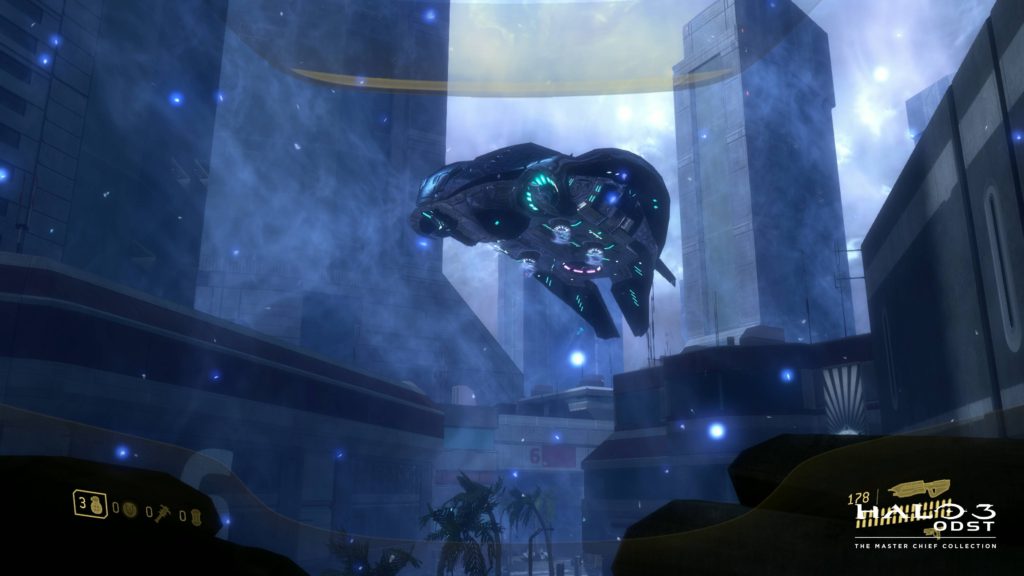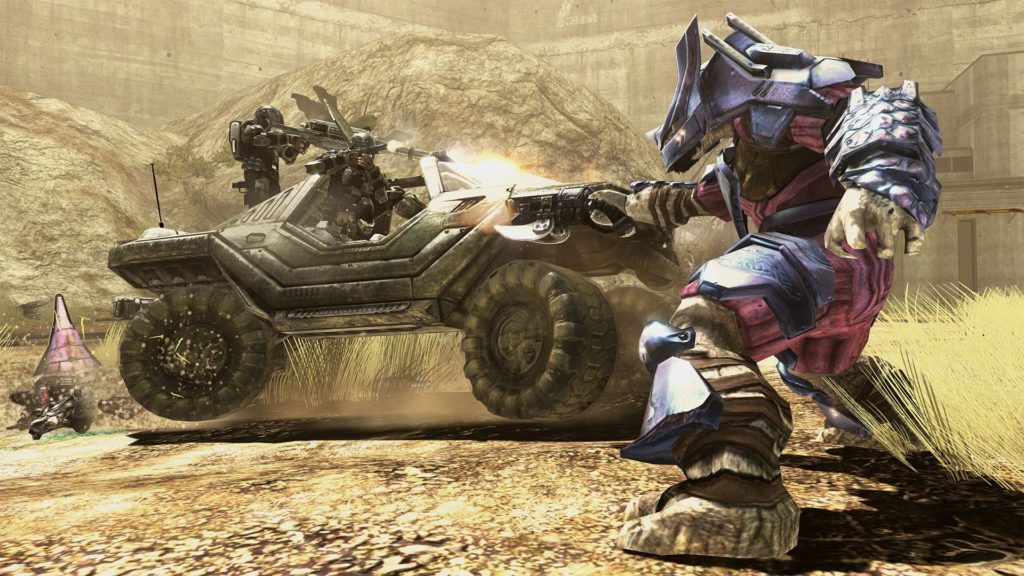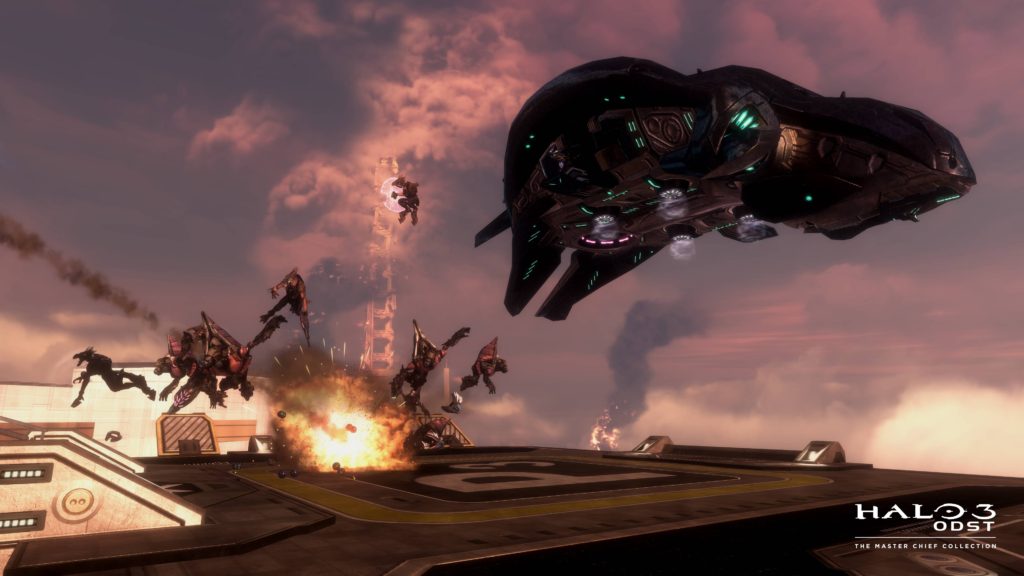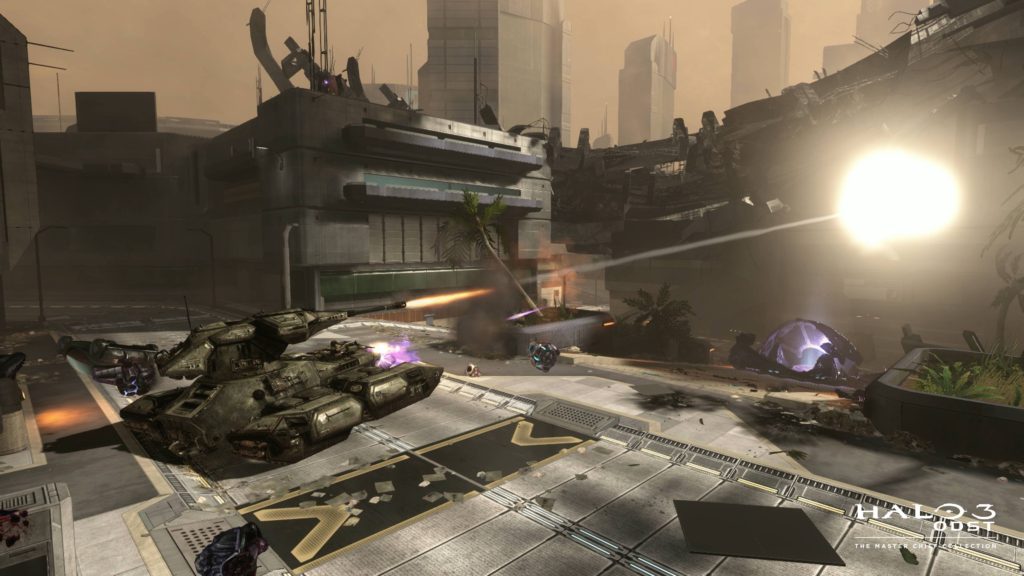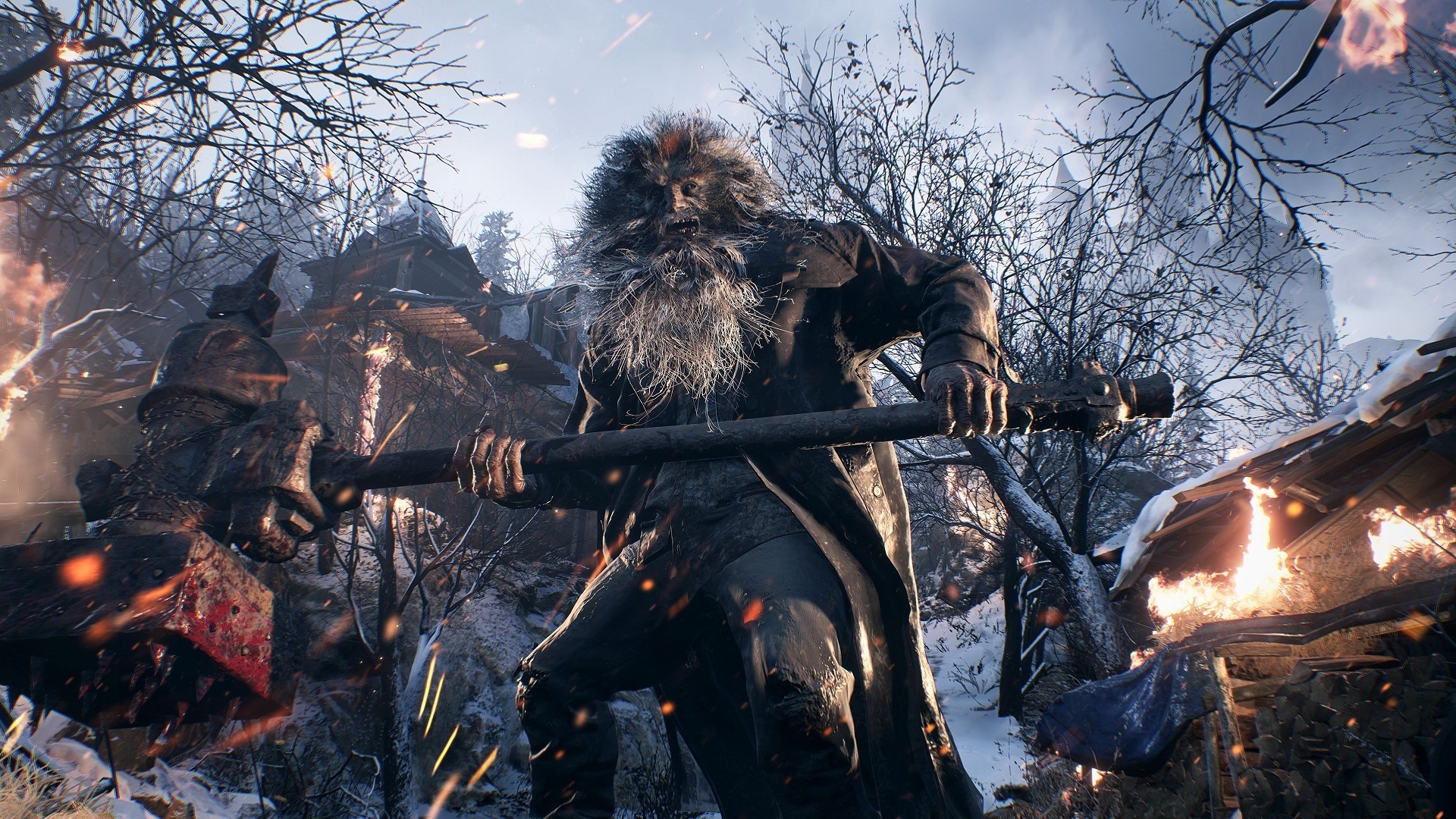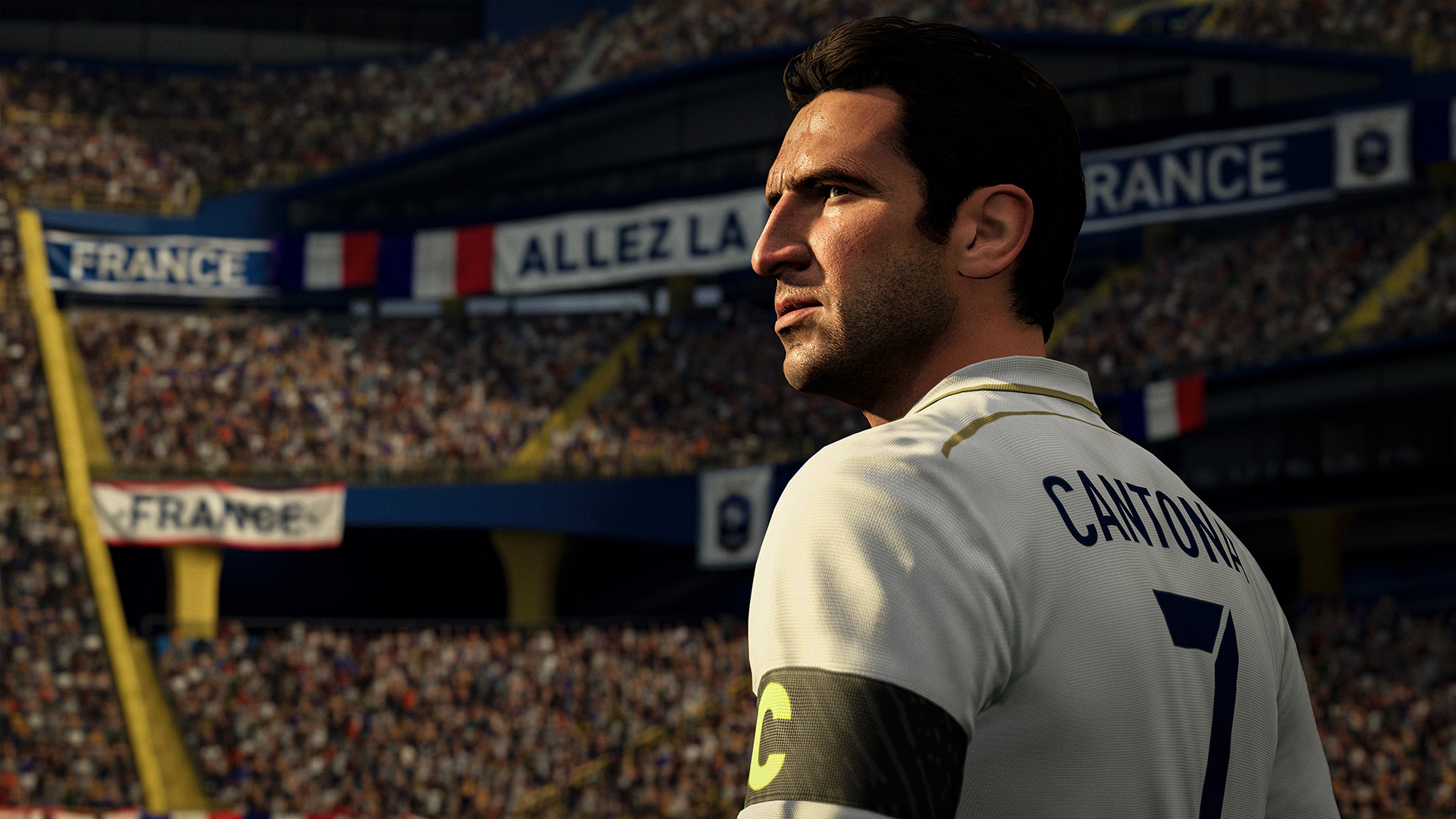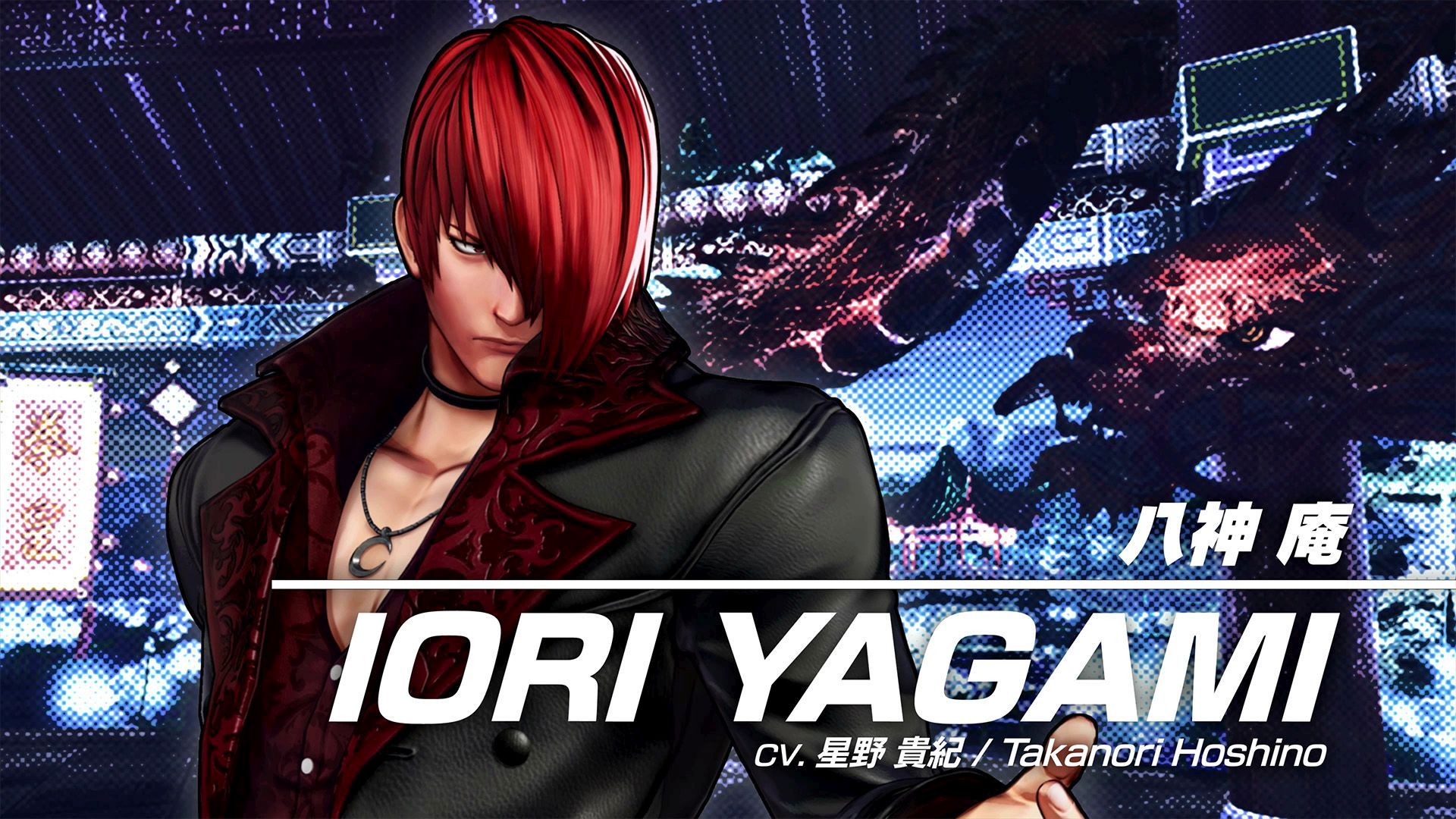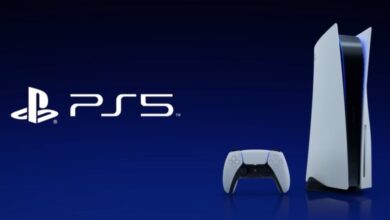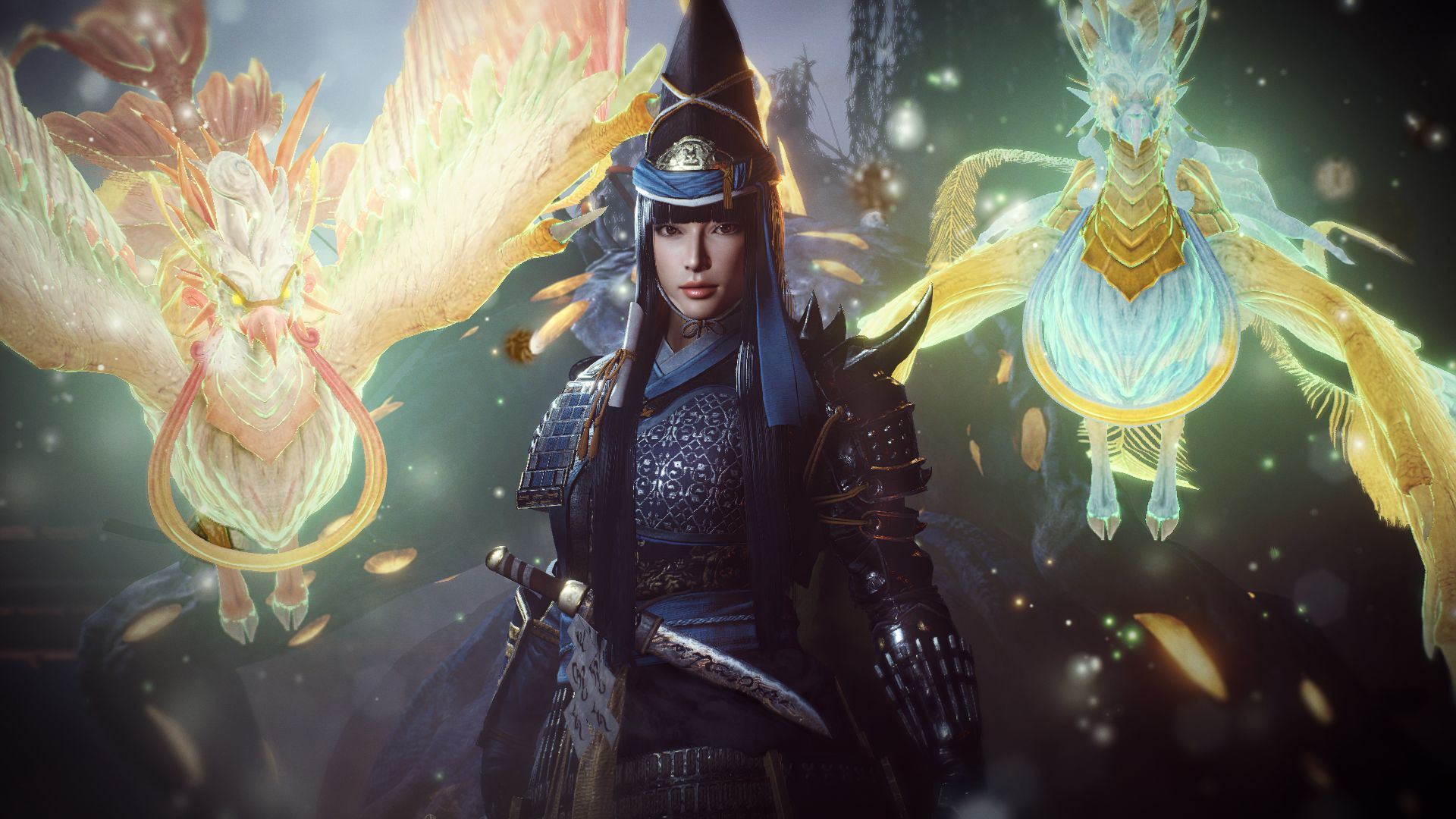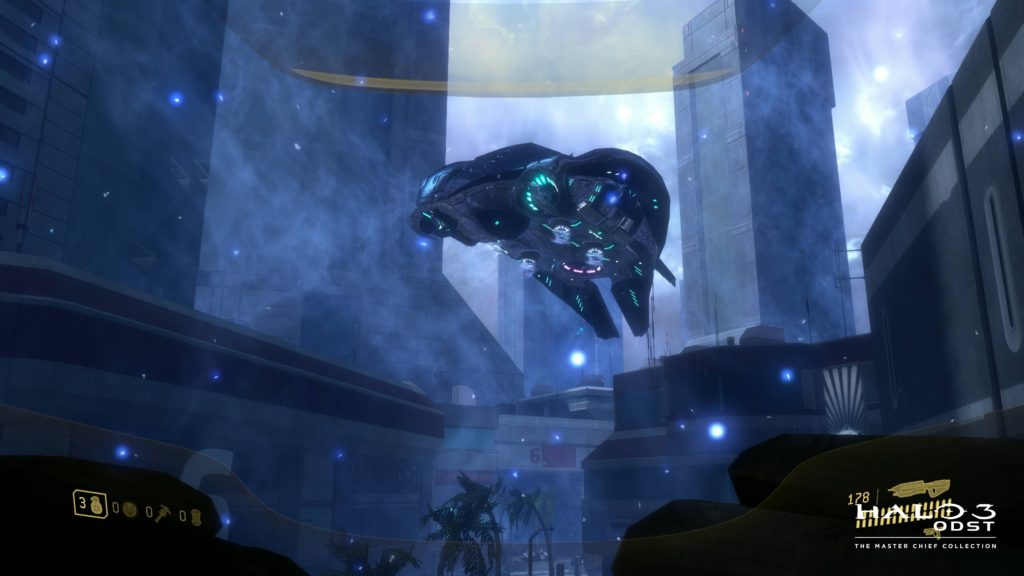
Halo 3: ODST is a strange game. What started as a small passion project at Bungie eventually expanded into a full-fledged release. It’s still the one Halo game where you don’t play as a Spartan, and the only Halo game that features a hub world (at least until Halo Infinite drops sometime later next year). And like Halo 3 and Reach before it, it has never appeared on PC until now.
If you’re playing ODST for the first time, you’re in for a treat. Chronologically, the game takes place during Halo 2. You play as The Rookie, the newest member of a squad of Orbital Drop Shock Troopers. Like the Chief, The Rookie’s the strong silent type. Don’t worry, though; the rest of the squad more than makes up for his silence. It’s a fairly memorable set of characters voiced by an all-star cast that includes Nathan Fillion, Alan Tudyk, Adam Baldwin, Nolan North, and Tricia Helfer and it’s fun watching a group of distinct characters play off of one another. Bungie tried the same thing in Reach, but it works better here just because you get to spend more time with your squad and their fates aren’t sealed before the game starts.
" Each clue leads to a new mission retelling the story of one or more squad members, allowing you to spend time with each one of them while piecing together the mystery of the game’s narrative, which is pretty engaging."
The squad is dropped into New Mombasa with orders to go after the Covenant supercarrier holding position over the city. Things quickly go sideways and The Rookie wakes up several hours later separated from the rest of his squad. As he navigates the city, he discovers clues that illuminate where they’ve been – and what happened while he was unconscious. Each clue leads to a new mission retelling the story of one or more squad members, allowing you to spend time with each one of them while piecing together the mystery of the game’s narrative, which is pretty engaging.
ODST’s story owes a great deal to detective stories and film noir and the game’s music and atmosphere reflect that. New Mombasa overflows with atmosphere, especially in The Rookie’s section, which takes place entirely at night. The city is deserted, and Covenant patrols roam the streets, hunting for survivors. Abandoned cars and ransacked kiosks dot the landscape, while signs flash messages for inhabitants that are no longer there. The game’s jazz-influenced score, heavy on saxophone, piano, and sounds of rain, compliments its sense of visual style to create the most atmospheric Halo title. It’s a joy to wander New Mombasa and appreciate the attention to detail that pervades the entire game.
This even extends to ODST’s use of audio logs, which tell a standalone story that compliments the narrative of the main game. Bungie manages to weave them into the game’s environmental narrative as the Superintendent, the AI that runs New Mombasa, uses car alarms, signs, and audio cues to guide The Rookie to the logs’ locations. Finding enough audio logs also unlocks Superintendent caches that contain weapons and vehicles hidden throughout the city, providing a reason to hunt the logs down even if you’re not interested in digging into ODST’s lore. The way the game guides you to them and the bonuses they offer make the city feel alive and reinforces the importance of an optional narrative that is surprisingly well told.
"Every encounter in ODST intense – which is good, because the game is more than content to let you go long period without fighting when you’re playing as The Rookie. "
New Mombasa is a fascinating environment, but it’s also a dangerous place to be, especially for someone who isn’t a Spartan. The differences between playing as the Chief and one of the ODSTs are subtle, but they make a big difference. ODSTs are slower than the Chief, don’t jump as high, can’t dual wield, and do less damage with melee attacks. They also don’t have access to energy shields. Instead, you rely on stamina, which acts much the same way, though it takes longer to recharge and doesn’t absorb as much punishment before going down. ODST also sees the return of a health bar, which begins to deplete once your stamina is exhausted. Unlike health, stamina doesn’t recover; the only way to heal is to pick up one of the health packs scattered around New Mombasa. The lack of a motion tracker and a weaker grenade throw that feels a bit less accurate complete the effect.
Encounters have a different flow as an ODST, and situations that wouldn’t give a Spartan trouble (like taking on a regular squad of Covenant) are much more deadly. Sometimes it’s best to just sneak by tougher encounters than spend valuable weapons and ammo on a fight you’re not certain you’ll win – especially if you see a pair of Hunters on the prowl. This makes every encounter in ODST intense – which is good, because the game is more than content to let you go long period without fighting when you’re playing as The Rookie. Some will likely take issue with this decision, but I liked having quite moments to explore and appreciate the game’s atmosphere.
ODST also makes small but significant additions to Halo’s sandbox. The addition of the Silenced SMG and the Automag sell the nature of ODST’s more grounded, stealthy approach. The latter is particularly handy as it combines a silencer with a zoom function, conjuring shades of CE’s absurdly powerful magum without being the game’s best weapon. The Brute Plasma Rifle, last seen in Halo 2, also makes a return.
"The port also brings a long-requested feature to both the console and PC versions of The Master Chief Collection: ODST’s version of Firefight."
By far the biggest addition, however, are the Engineers, a new type of Covenant enemy. Engineers dislike conflict and don’t attack you. Instead, they conjure energy fields around their allies, making them much harder to kill. They’re pretty tough themselves, so you’ll have to focus on one to take it down. The Covenant, jerks that they are, have rigged them with bombs, so killing one has the potential to cause collateral damage. Their bombs will also detonate if you get too close or kill all their allies, so there’s no way to save them. They add a bit of flavor and strategy to encounters and I enjoyed working around their presence, even if I did feel bad about killing them.
The port also brings a long-requested feature to both the console and PC versions of The Master Chief Collection: ODST’s version of Firefight. Both Reach and Halo 5 have their own versions of the mode, and the former’s has been in the MCC for ages. ODST’s, however, is widely regarded as the best version due its map selection and the tension of playing a more vulnerable character. The problem was that the original release didn’t feature matchmaking, so you had to have three friends join you if you wanted to play with a full squad. Thankfully, this release fixes that. ODST’s Firefight is as great now as it was in ’09. Firefight is Halo’s version of Horde mode, tasking you with clearing wave after waves of enemies while managing a limited number of lives.
More lives are added at the end of each round and each round is made up of several waves. You’ll start by facing simple enemies – Grunts, Jackals, a couple of Brutes – but as things go on, the difficulty ramps up, and you’ll eventually stare down Hunters, Brute Chieftains, and enemy vehicles. At the end of round, the game will switch on more and more of Halo’s signature skulls, which makes enemies tougher. There are also bonus rounds, which usually feature something silly, like an overwhelming number of grenade-happy Grunts, and reward you with lives for surviving and reaching a certain score. All told, it’s an incredibly engaging mode and I’m happy to have it back 11 years to the day since ODST’s original release. I know it’s something I’m going to sink a lot of time into, especially with the addition of matchmaking.
"The return of Firefight alone would have made ODST worth the price of admission alone, but 343 has gone above and beyond when it comes to adding features."
The return of Firefight alone would have made ODST worth the price of admission alone, but 343 has gone above and beyond when it comes to adding features. You can now customize and save your own Firefight variants, and the Assault Rifle, Battle Rifle, Hornet, and Anti-Air Wraith are now available in the mode, too. In addition to a classic Firefight playlist, 343 has also added Arcade Firefight, which features an unlimited number of lives and more ridiculous weapons. So far I’ve only managed to play Splackets, a mode where each player starts with a Spartan Laser and a Rocket Launcher, both of which have unlimited ammo, but the mode is a blast, and I imagine more variants will come online as 343 irons out bugs and implements community feedback.
Speaking of bugs, there are a few. Most are pretty minor. Firefight has an issue where certain units and vehicles can get stuck on environments, which can block match progression (this is probably due to expanded game modes, which is why Arcade Firefight is more limited until these bugs are fixed). In campaign, shadows are darker than they should be, single-shot weapon recoil is too aggressive, there’s the odd sound error and combat voice lines repeat too often. The only major error I encountered outside of Firefight was that the game loses track of your audio log collection when you die, which is a pain when you’re trying to get all 30 of them. It’s definitely irritating, but I never encountered anything gamebreaking.
In fact, I’m happy to report that the game ran exceptionally well. Like every game in the collection, ODST features an FOV slider, enhanced graphics options – which, like Halo 3, mostly seem to affect draw distance – and mouse and keyboard controls. As a Halo veteran, I was most comfortable playing with a controller, but the mouse and keyboard controls work fine – even if they don’t benefit from Halo’s generous auto-aim. I did, however, make liberal use of the enhanced graphics option and the expanded FOV, which in addition to making things easier to see, lets you appreciate just how fast Halo is.
"ODST is still the most stylish and unique Halo game and being able to play it, and its incredible version of Firefight again, is wonderful. More than a decade later, there’s still nothing quite like it."
I ran ODST on a 2060 Super with 8 GB of VRAM, an i5 6600k at 3.5 GHz, and 16 GB of DDR4 RAM. I’m admittedly quite a bit over the game’s minimum and recommended requirements, but as anyone who plays on PC will tell you, that’s not a guarantee that a port will run well. I ran ODST at 1080p and a locked 60 fps, and the game never had any trouble – even in Arcade Firefight with rockets and Spartan Lasers going everywhere. Considering how infamously finicky Halo’s engine is, and how troubled some of the other ports in the MCC were at release, what 343 has accomplished with ODST is impressive. Like Halo 3 before it, the game really benefits from the enhanced resolution, which highlights Bungie’s knack for visual design. ODST doesn’t look modern, but it does look good, and several of Halo 3’s weakest visual elements – like the character models and faces – are significantly improved here.
ODST’s arrival also changes the MCC as a whole, bringing several fixes – including the long-promised fix to the BR’s hit detection in Halo 3 – and a new season of content to unlock, all of which is for Halo 3 or ODST, including new visual customizations for your multiplayer characters, nameplates, and characters for Firefight. As before, you can unlock content in a section in any order, but you’ll have to unlock an entire section before you can proceed to the next one. There isn’t as much to unlock here as in past seasons – there are only 50 unlockable over 5 sections, whereas previous seasons featured 100 spread out over 10 – largely due to Halo 3’s already extensive customization options, but it’s nice to see season content that matches up with the most recently released game.
Like all releases in the Master Chief Collection, Halo 3: ODST isn’t a perfect port. It has flaws, particularly in Firefight and with regard to the game’s audio logs. That said, the fact that 343 continues to make these games run as well as they do on a platform they were never designed for so long after their original releases is nothing short of a minor miracle. The MCC continues to improve with each patch and I have no doubt that the problems here will eventually be fixed. In the meantime, we can enjoy ODST in all of its glory. It’s still the most stylish and unique Halo game and being able to play it, and its incredible version of Firefight again, is wonderful. I’m happy to return to New Mombasa, to wander its ruined streets and let the sounds of rain and smooth jazz wash over me. More than a decade later, there’s still nothing quite like it. You know the music. Time to dance.
This game was reviewed on PC.
